#alfar
Text
A gratitude ritual to the elves
(For the autumn season!)
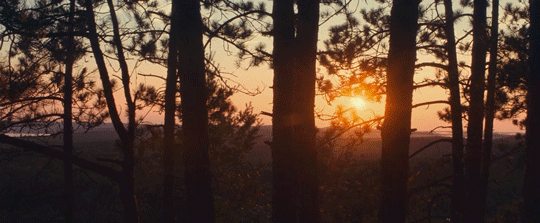
This is a ritual that I’ve created some two years ago, as a gesture of thanks and acknowledgement to the álfar as land spirits. It acts as the “closing ceremony” for the harvest season, so it could be fun for you to perform it on Samhain if you celebrate, or on your preferred date to perform the Álfablót. It’s made up of three major steps; the offering of drink, the offering of food and the burning of autumn symbols, all of which are separated by invocation and prayer. Without further ado, I will detail the ritual.
The first step? To bake/cook/prepare your offerings of food and drink. I think it’s important to incorporate local seasonal ingredients, as they come directly from the land you live on and therefore, can be considered gifts from the harvest Gods and spirits. Examples of seasonal drinks might be cider (apple juice also does the trick if you’re alcohol-free!), mead, mulled wine, spiced drinks and the like. Seasonal foods might be include apple, pumpkin, corn, squash, etc…
The final offering requires you to go and pick a few good, local symbols of autumn. These can be fallen leaves, helicopter seeds, fallen flowers… Basically anything that you know will burn well and which you won’t have to pluck directly from the tree or plant it comes from. If you grow herbs, fruits and/or veggies, it’s also possible to offer them up as well. I also write down on a piece of paper a few things I’m grateful to the álfar for.
Prepare a ritual bowl or cup in which to pour the offering of drink, a plate in which to place the food offerings, and a fireproof space in which to safely burn the autumn symbols (I use my cauldron).
Optional but fun: I line each plate up in the order drink-food-fire in an outside space and kneel before them to perform the ritual. I then light incense and anoint each plate with ritual rosemary oil, for purification and protection.

Invocation: “I call upon the spirits and guardians of my land. I call to me the people of Yngvi-Frej who dwell in Álfheimr. Come to me Hidden Ones, come and receive that which I humbly choose to give back, in thanks and as to show my gratitude.”
As you pour the offering of drink: “May you accept this libation, symbol of the water which flows under the earth and nourishes the soil. May you look with fondness upon me and those who dwell on your lands.”
As you offer the food: “May you accept this shared meal, symbol of the many gifts of the earth. May you bring forth favorable and plentiful seasons henceforth.”
As you burn the symbols of autumn: “Another harvest has passed, with your blessing and your protection. Noble elves who answer to the Vanir Son, I am grateful for the land that you share so generously with me and my loved ones. Please bless the soils to be bounteous for the coming year.”
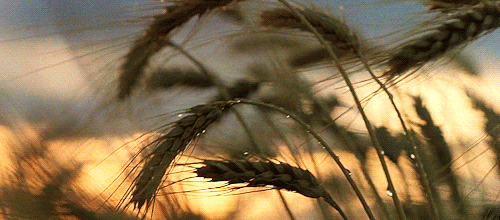
I hope you all have a happy autumn season (or spring, if you live in the southern hemisphere!).
#heathenry#Álfablót#elves#norse paganism#witchcraft#yngvi freyr#spirituality#norse gods#polytheism#deity work#deities#alfar#álfar#land spirit#spirit work#ritual#rituals
103 notes
·
View notes
Text
Patreon Poem/Prayer/Song 94: For The Revelry
If you want to submit a request for a prayer, poem, or song to be written to you privately or to be posted on this blog or my Patreon for a God, Ancestor, or spirit, sign up for the Ansuz and above level here on my Patreon.
This request was made by Maleck for Freyr’s retinue, The Revelry.
The mound opens
Disgorging the twisting, writhing, dancing
From the yawning mouth
Leaping, pirouetting,…
View On WordPress
#Alfar#ancestors#animism#animist#Ansuz#Álfar#álfr#elf#Elves#Freyr#God#Gods#heathen#Heathenr#Heathenry#poem#polytheism#polytheist#prayer#religion#retinue#song#vaettir
2 notes
·
View notes
Text
The Sunder of Alfheim
Long ago, we were invaded. The mages came from their metal and plastic world to find our legendary artifacts. Lore foretold the coming of a new age once they were released, and so they were. Yet, we scattered them from our homeworld, far from even our own reach. After the great war, we sealed our home off from any who did not belong. Yet, the great trees told of the coming of another, one who would reunite all of us in a battle against an enemy of sun and fire. A pretender to his brothers throne.
Alder, Blackthorn, Oak, Yew, Rowan, Ash, Birch, Pine, and Elm. The nine counselors of our ancient world gathered from their groves afar within the Darkshire. The place where the root of their parent resided. It was there that a pact was made, to seal the world off from all who might harm us in search for our ancestors ancient relics. They foretold that once the moon blackens the burning sun, wishing to tear us asunder, would then the worlds be at their weakest. We did not know then of what the Nine meant by this. We still do not know why they gathered on the very day after the mages had left our world.
Perhaps the Nine know more than they let on, perhaps their guardian told them what may come. Yet we can never know. The root sealed us off from entry, and only our ruler remained with them. One who was first chosen. There would come a day when the First would return, but it would be through the statues that dot the landscape from every tribal settlement. Though we cannot be sure of the authenticity of this translation. The language of the Nine is all but often cryptic and not entirely literal. What ever the case, the mages have gone, returned to their own world in realising what they sought was not here.
Freyr erected a barrier, just as the prophesy has been foretold. Aeon can only tell us through his endless reach. May we always be protected from those dubious invaders, sick in their lust for power.
2 notes
·
View notes
Text
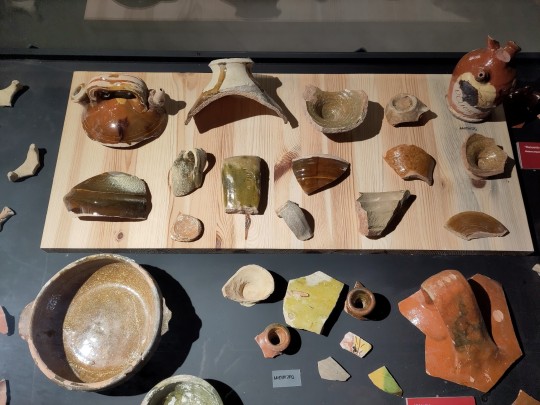
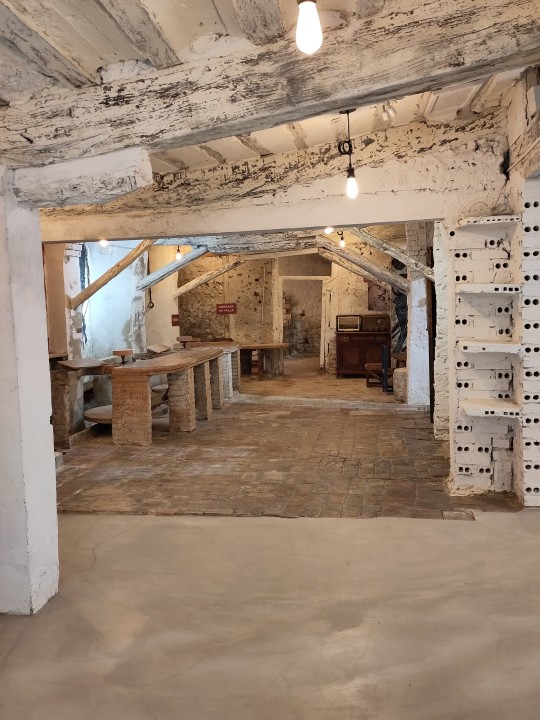
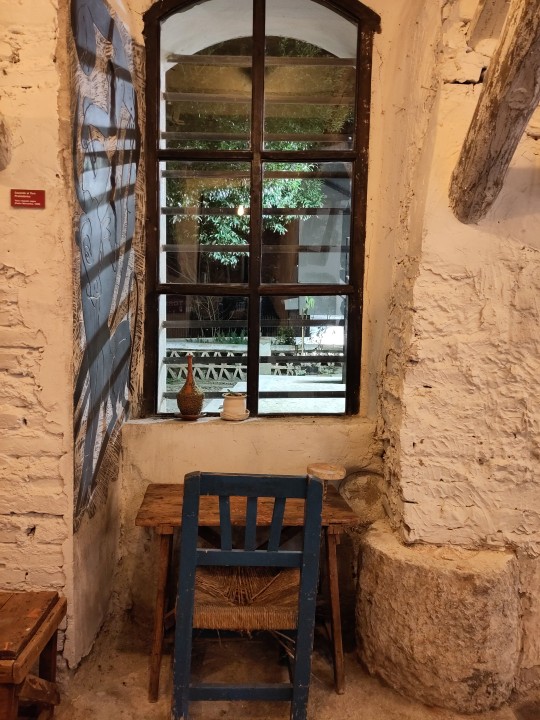
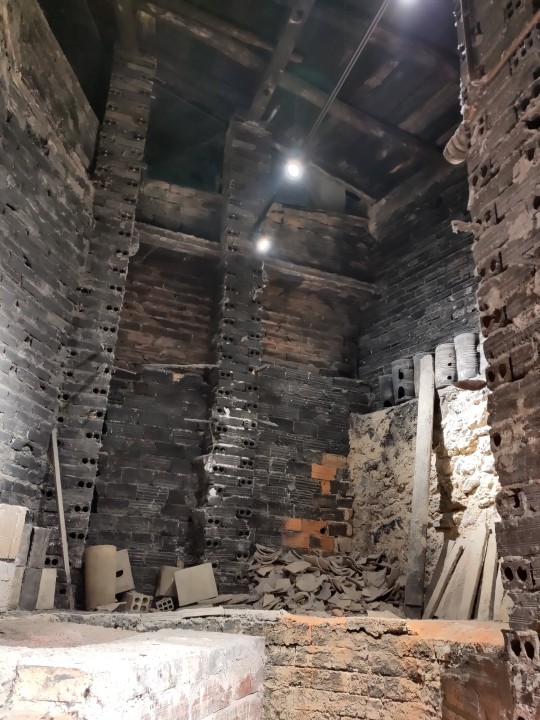
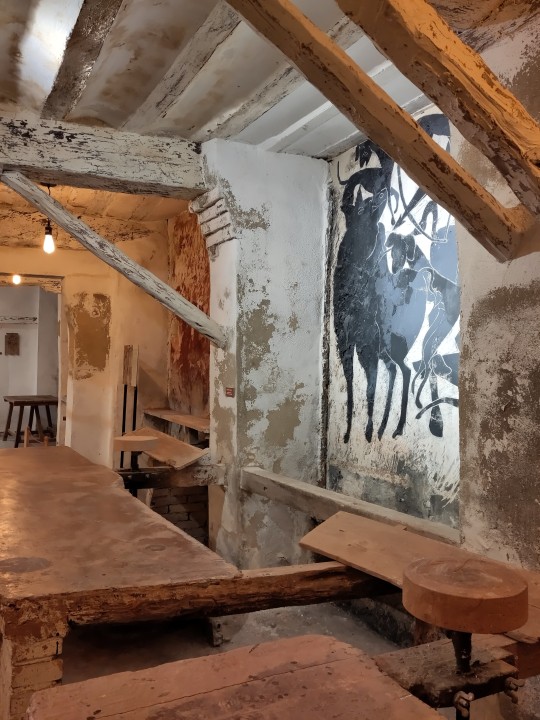
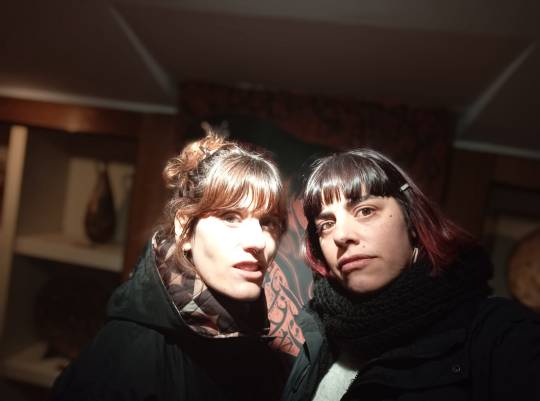
Tus trocitos. Tus cositas.
0 notes
Text
Troll, Alfar, Hestar
Three short stories set in Iceland. Quick to read. Now I really want to go to Iceland. I haven't looked to see what else SJC Schreiber has written yet but I hope it's a lot.
0 notes
Text
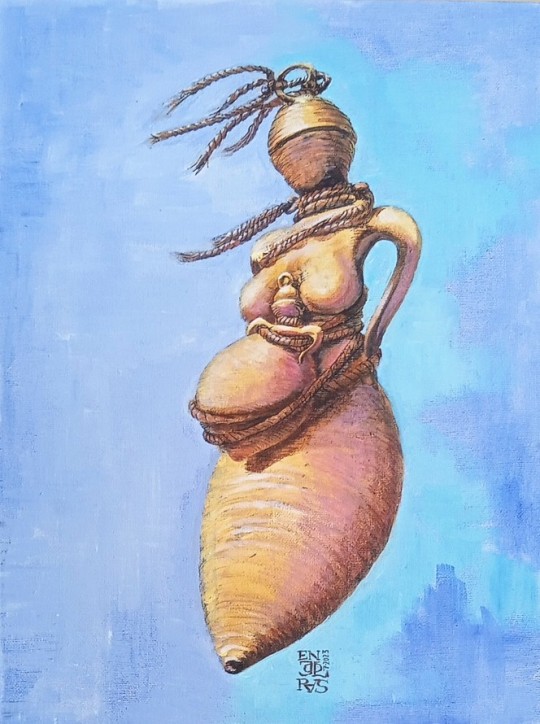
La cántara y el cantarito, Maternidad de barro 2. Alfar sagrado. "Llevamos este tesoro en vasijas de barro".
1 note
·
View note
Text

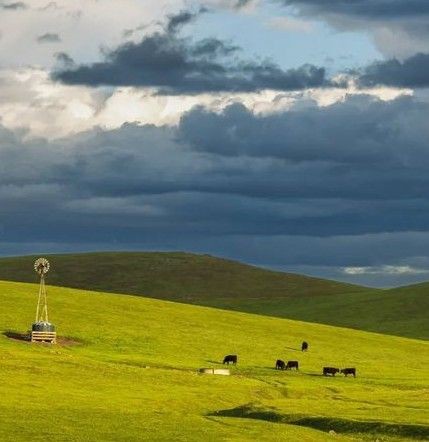

ㅤㅤ✿ㅤㅤㅤ꒪ㅤㅤ the dust from the cherry blossoms disappears with shells near. peach tree and aromatic flowers.
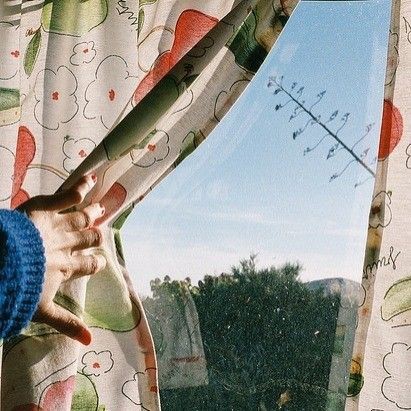
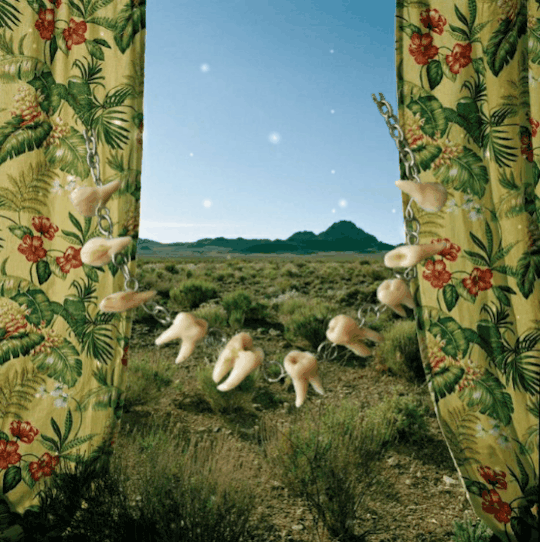
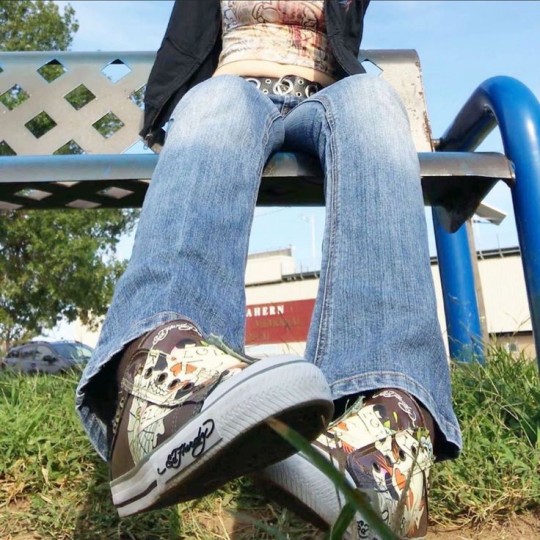

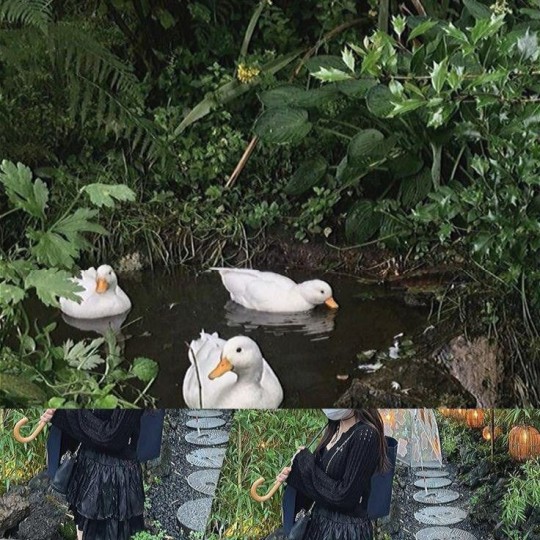

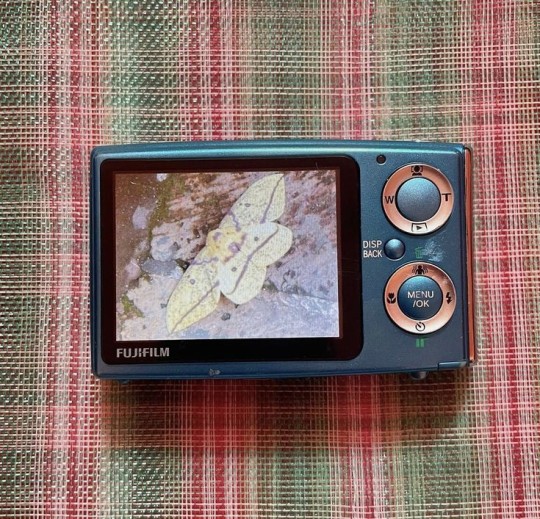
Me ,you and sky
#͏ ͏ ͏ ͏ ͏ ͏ ͏ ͏ ͏ ͏ ͏ ͏ ͏ ͏ ͏ ͏ ͏ ͏ ͏ ͏ ͏ ͏ ͏ ͏ ͏ ͏ ͏ ͏ ͏ ͏ ͏ ͏ ͏ ͏ ͏ ͏ ͏ ͏ ͏ ͏ ͏ ͏ ͏ ͏ ͏ ͏ ͏ ͏ ͏ ͏ ͏ ͏ ͏ ͏ ͏ ͏ ͏ ͏ ͏ ͏ ͏ ͏ ͏ ͏ ͏ ͏ ͏ ͏#jacob elordi#aesthetic#alternative moodboard#saltburn#felix#divider creds: alfare#espour#bios credit:espour#jacob elordi icons#site model icons#hollywood actor#hollywood#light academia#blue moodboard#green moodboard#cottage core#cottagecore moodboard#indie moodboard#vintage aesthetic#kpop bios#twitter stuff#felix catton#hot celebs#euphoria#colourful wallpaper#sunrise#nature moodboard#sky#boyfriend material
144 notes
·
View notes
Text

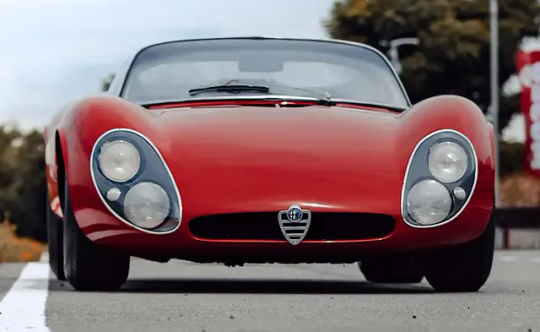

#cars#car#supercar#fast car#luxury#supercars#luxurycars#alfa romeo#alfa romeo 33#alfar romeo 33 stradale#stradale#super car#super cars#italian supercar#1967 alfa romeo stradale 33#classic#classic car#classic cars#classic supercar#legend#icon
209 notes
·
View notes
Quote
I have found that grief is a real thing. It claws and bites like a cloud of insects with no less intensity, only much slower, much quieter, much more deliberate. When I tried to face it, it embraced me instead.
Dean Francis Alfar, “Saturdays with Fray Villalobos” from The Kite of Stars and Other Stories
#Dean Francis Alfar#The Kite of Stars and Other Stories#quote#fiction#fantasy#short stories#2023 reads
148 notes
·
View notes
Text



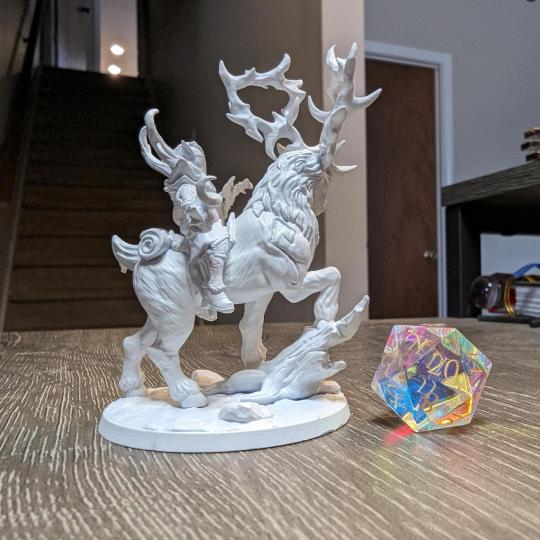
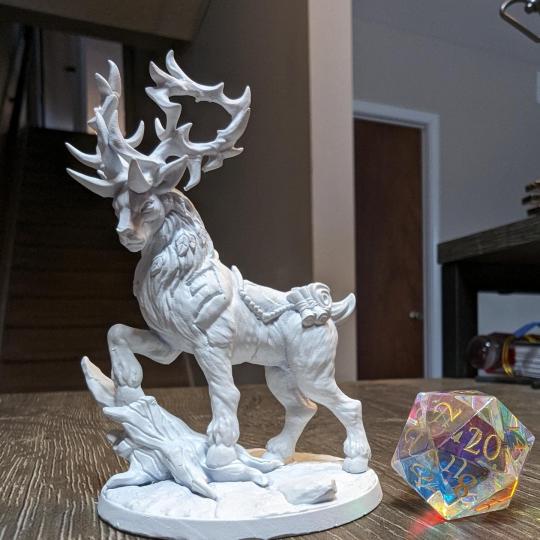

The Forest King and his rider, Endelshar Oakrage! One of the most majestic miniatures we have looks even more elegant with white primer. This miniature features a 2 inch base size for a standard 1 inch grid system.
Beautifully sculpted by @/andreatarabella.ag of @/artisan_guild_p over on instagram. Give the accounts a follow and check out their other miniatures you won't be disappointed, I promise!
This model, along with all other Artisan Guild sculpts, are available on our Etsy store as a published listing or by request. The Forest King comes in this version (variant B) as well as a "wild variant" without a saddle and rider (variant A).
Product listing here: moradinsforge.etsy.com/listing/808335507
#miniature monday#mini commission#miniature painting#3d printed#3d printing#hand painted#dnd druid#dnd drow#dnd mini#dnd miniature#dnd#dnd character#dnd character art#dnd homebrew#tabletop gaming#druid#ranger#beastmaster#wild shape#moradins forge#moradins forge minis#ttrpg miniatures#ttrpg mini#ttrpg#pathfinder#pathfinder miniatures#pathfinder mini#gaming miniature#artisan guild mini#deepwood alfar
19 notes
·
View notes
Text

you keep your nightmares away from azura!!!
#fire emblem#fire emblem heroes#fire emblem fates#fe14#corrin#azura#triandra#i always find it funny how similar the adrift concept was to the alfar#i wish they had acknowledged that connection in book 4!!!!!#especially when loki was involved in the adrift paralogue. what does it all mean
401 notes
·
View notes
Note
Hi! I saw your post on the alfar (and land spirits in the context of heathenry). I was wondering if you might know of or want to share some more facts specifically unique to the Alfar? I’m really interested in them because there’s been a lot of debate I’ve seen on where they differ from the Irish fair folk and where they are similar. When I first learned about norse mythology the book I read depicted them very similarly to Irish faeries. But now I’m wondering based on your last post if that book’s depiction was misleading? UPG is acceptable too! If you have any experiences with them.
Hi there! Thanks for coming to me with your question! It really is a nuanced and interesting topic, which is why I wanted to make a full post out of this. I've actually mean to post about álfar for a while, so I guess now’s my chance! However, the sources we have concerning them aren't many, which makes it quite difficult to describe them, or the way the were regarded in pre-christian germanic societies. What we can say for sure is that they are supernatural beings tightly linked to nature, and that the norse álfar are actually the oldest known elves. They could be nature spirits, or even gods! That last possibility is due to their being constantly called "Vanir" in at least one piece of norse poetry. They are also associated with death, since king Olaf Geirstaðir was said to have become an elf after his passing, roaming around in his burial mound. Indeed, elves are said to dwell in burial mounds, and they are sometimes called “mound-dwellers”. This partly explains the álfar’s association with ancestors, but more on that later. Depending on the tradition, they can also inhabit forests, the sky, bodies of water and such. In Iceland, mountain elves are called Huldufólk, or “hidden people”. As you can see, the very definition of “elf” in the norse pagan sense is already hazy! So let's dive in a little deeper, shall we?

Snorri Sturluson divided the álfar into two groups: the ljósálfar and the svartálfar. According to him, the first were "light elves" and the second, "dark elves". Both these groups are said to be very skilled at magic and/or smithcraft. However, the svartálfar are often called dwarves and are said to live in Svartálfheimr, one of the nine worlds. It is also said that they would turn to stone if exposed to sunlight. The ljósálfar as Snorri describes them are a lot closer to the way we are used to picturing elves: luminous (they are associated with the sun), beautiful, etc. They are allies of the Æsir and it was conjectured that the God Yngvi-Freyr is their ruler. The reason for this is that Freyr is said to dwell in the world of Álfheimr, homeland of the elves, and his name is often preceded by Yngvi, meaning “lord" or "king". As a biased heathen, I can say that Freyr being ruler of the elves is pretty much SPG, even though it was never explicitly proven why such a belief was around before and during the Scandinavian iron age.

Now, it isn't certain the germanic peoples even made a distinction between these "light elves" and "dark elves", or even between them and jötnar or landvættir. The differences in the way these beings were perceived all depend on the era, the social class and the area. There is evidence of specific álfar worship, however. The Álfablót was a type of sacrifice made to álfar at the end of autumn, when every crop had been harvested. Their worship often overlapped with that of the ancestors, the dísir and/or Freyr. According to folklore, elves can be seen dancing (“älvdanser”) over meadows, sometimes at night and sometimes on misty mornings. According to folklore, watching them dance would make you lose years of your life within minutes. Their dancing would leave circles called älvringar ("elven rings"). Disrespecting these rings would bring about terrible consequences, such as illness. Though they are generally considered forces of good, or at least light, their role in norse myths and stories can be that of antagonists. In the Völundarkviða for example, one the most famous elven character appears: Völund (or Wayland) the Smith, a famous craftsman who, after being wronged by a king, exacts a cruel revenge upon him by killing his sons. Völund is very popular in oral tradition and he's actually quite the complex character, showcasing features of both Snorri's "light elves" and "dark elves". He is peaceful but he can also be wrathful and merciless. The latter trait seems to fit with scandivanian folklore, according to which elves are capable of causing illness. This duality is also present when it comes to the álfar’s other magical influences. It is said they cause both fertility and sterility.

As Christianity spread in Europe, the elves were either demonized or turned into angels, just like Snorri had done to separate the “good elves” from the more mischievous ones. Still, it seems no incarnation of the elves was ever truly good or truly bad. Most of them are, at least according to me and many other norse mythology enthusiasts, morally grey beings who can both aid and punish. I know this makes them all the more akin to the Irish fair folk, but the major difference between these two mythological beings is the way they are interacted with. Nonetheless, there are very little sources on how the álfar were worshipped historically. Since this worship is performed in vastly different ways within neo-pagan circles, it’s hard to list precise álfar worship rituals. Some of us present them with water, tea, herbs, local fruit or reapings from our gardens, as well as coins, ribbons, flowers, etc... Personally, the hörgr is an integral part of my relationship with the elves. Since it’s outside, it simply feels natural to make my sacrifices to álfar above it. Plus, sacrifices to them used to be made in boulders or stones with cup-like cavities, which were said to be elf-homes and have healing powers. People tend to honor them at the end of autumn and/or at equinoxes, since the latter are times of natural balance. Those are pretty much the basics of human-álf interaction!
I hope this answered you question well! It’s probably too long and detailed of an answer, so I’m sorry about that, I couldn’t help myself. Wishing you a great and peaceful day!
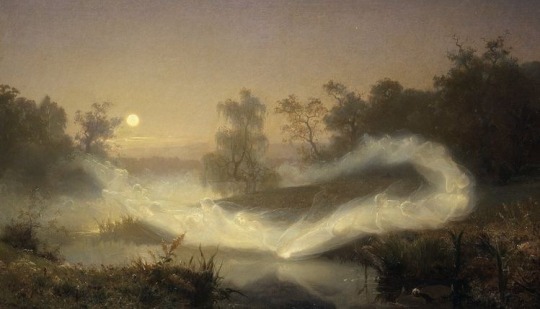
#alfar#elves#Freyr#norse mythology#norse paganism#norse myths#mythology#norse polytheism#polytheism#paganism#heathenry#ask#asks#spirits#spirit work#land spirits#elf
122 notes
·
View notes
Text
A Lay for the Wild Hunt
The horde roaves roads of forests,
Roaming the wild of the world
Across field and fen, frost and flame
The host fairs forth
Gods and great Dead are the vanguard,
Wolves and wild things follow and watch the ways
Above come ravens and crows in the wake
Between are those borne and brought into stride
The sunsets are stained dark with blood
Shadows teem and swallow the night
The sound of their sumons…
View On WordPress
#Alf#Alfar#ancestors#animism#animist#blood#bone#corvid#crow#dead#Elves#Erlking#heathen#Heathenry#hospitality#hrafn#hunting#monsters#Odin#offerings#Paganism#Perchta#poem#polytheism#prayer#raven#rider#riders#sacrifice#song
2 notes
·
View notes
Note
✧ apolytus: the moment you realize you are changing as a person, finally outgrowing your old problems like a reptile shedding its skin.
obscure sorrows
When the first thorns grow out of her hair, she begins to cry much less.
It is curious, of course. One would presume such an appendage would bring nothing but pain to her—but the nectar her lady had been providing makes pain but nothing. In fact, the thorns are something Triandra finds herself appreciating. Too often did she catch her own reflection in pools of gemstone waters and see how much human remained in her features. This is a girl who is weak. This is a girl whose hands are stained. This is a girl more useful to the world when she is gone.
Now, however? Why, she looks too freakish to be human at all! She is evolving. She is growing. She is even beginning to forget her former life. Her hands go to touch the thorn that sticks out from her hair; it pricks, it bleeds, and when she sucks the blood off her finger it tastes saccharine. Triandra feels somewhat enamored by this.
What once was bitter turns honey-sweet. Tight cocoons give way to wings. And soon, she will not recall the fact that she was a girl at all. She will thank her lady profusely for that.
The rest of her biology collapses rather quickly. First, it was thorns, then it is a large rose blooming out from the locks of her hair. The dream nectar only nurtures the growth. Plant life takes its root in the soil of her body and crawls through her flesh until it is clear to any who gaze upon her that she is otherworldly. Inhuman. Something only seen in one's wildest dreams—or worst nightmares.
Triandra sees this transformation and finds a warm surge of satisfaction pulsing through her. Finally, this is a girl worthy of becoming fear itself.
#INBOX ✦ munting pangarap#((freaked up alfar biology my beloved))#((i deeply enjoy the fact that the thorns on triandra seem to be growing from her))#((thanks for sending n!!!!! very cheesed by this prompt))
9 notes
·
View notes
Text
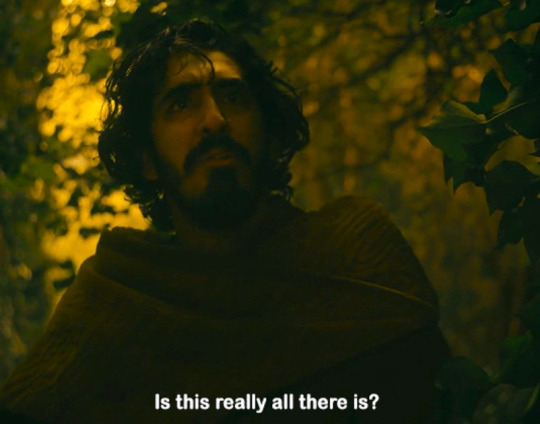



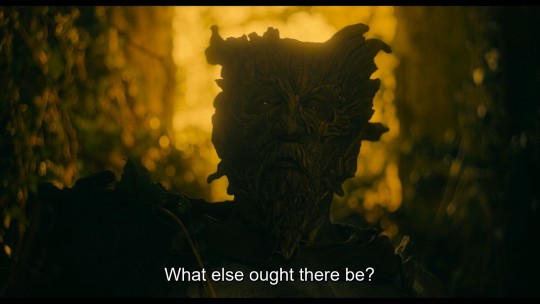
No Lines. No Directions.
(Rosencrantz and Guildenstern are Dead / The Middle Prince / The Green Knight)
#rosencrantz and guildenstern are dead#the green knight 2021#the middle prince#the middle prince by dean francis alfar#the green knight
32 notes
·
View notes
Text
hello once again, your friendly neighborhood spaniard is here once again to comment on the references to spanish culture i'm seeing while playing scarlet and violet!
here's my previous post on this! and i wanted to tell you that as per this post, i've officially seen all the cities and towns in paldea which means there's not really much else to explore, these posts are coming to an end :(
anyways, let's start
if montenevera is based on the pyreenees, it makes sense that the area around the fairy squad camp is modeled around another part of northern spain, in this case asturias and more precisely the picos de europa national park, arguably the prettiest part of the country (i've never been there but everyone that has been says asturias is the prettiest so who am i to disagree). just like in the game, it's a beautiful prairie place next to big scary mountains and right by the sea! however, there are no marshy areas in asturias; the three largest ones in the country are the ebro delta [pic 6], the valència albufera [pic 7], and doñana national park [pic 8]. i would say the in-game one is probably referencing the ebro delta, only based on location, as the other two are more south.






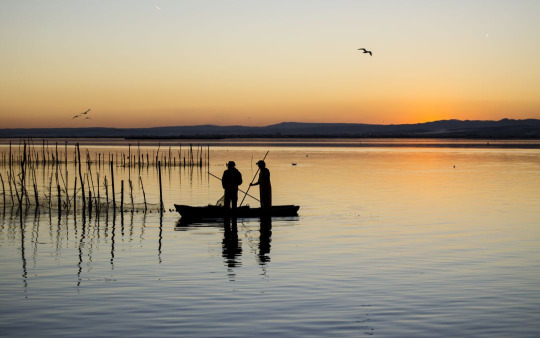

another fun thing about this area is that if you go swimming in the north coast you'll be able to find the tynamo evolution family, based on lampreys! lampreys have been fished in galicia as early as the roman times, with unique rock constructions built in the rivers called pesqueiras used to specifically catch them. they are part of the traditional galician (and portuguese!) cuisine, and they are similar to anchovies, one of the most popular dishes in another northern iberian area, cantabria.




finally, there's the last town of the game that i had yet to see, alfornada! one fun fact about me is that my favourite architectural style is mudéjar, so i was absolutely stoked to see a whole town built in that style!!! for everyone who doesn't know what mudéjar is, or why arabic-inspired music sounds all throughout the town, i'm gonna summarize 700 years of story really quick: after the western roman empire fell, the visigoths took over the peninsula, and things were chill for a bit until 711, when the moors invaded the peninsula. by 722 all but asturias was now part of the umayyad caliphate (we call moorish iberia al-andalus for short), but the asturians defeated the moors in the battle of covadonga and from there on the reconquista started, a centuries old war between christians and muslims in iberia that lasted until 1492, when the last remnants of al-andalus were defeated. as you could imagine this conjured up a very complex social landscape and a unique cultural makeup that still lasts till this day. within all of that, there were three groups we had to study in class and were a pain in the ass to differenciate (i had to search what each one were for this post): muladíes (local iberians that converted to islam and lived in al-ándalus), mozárabes (christians and jews that lived in al-ándalus), and mudéjares (muslims living in the iberian christian kingdoms). mozárabes and mudéjares had to pay extra taxes and live in special quarters of the cities, but apart from that they all lived peacefully which is neat. both groups had their own art styles, but the mudéjar art and architecture was the most prominent of the two, and even experienced a renaissance in the 19th and 20th centuries with the neo-mudéjar style. it basically mixes muslim and christian styles and it's so good i love it with all my heart.
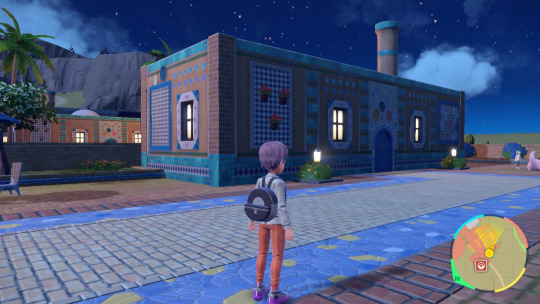
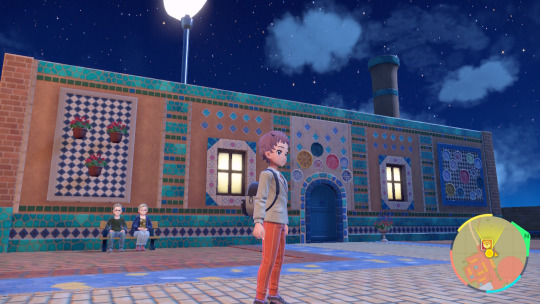


also, alfornada is known for its pottery, and ceramics are one of the traditional spanish arts, there are still a lot of ceramic workshops in rural areas where you can find handmade ceramic. and the plates displayed in alfornada are also very popular in the country, every grandma has at least one set very similar to the ones in the game lol. one particular place associated with this type of ceramic is talavera de la reina, in toledo. as our ex-president once said 'the talavera pottery is a big thing, in other words, it is not' a small thing' (it doesn't make sense in spanish either <3)

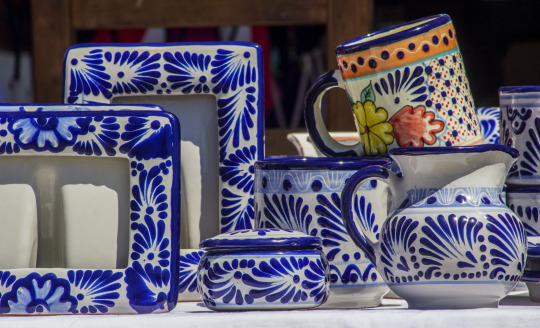


you thought i was done with this town huh? surely there isn't any more references right??? right??? well, we're just getting started. another interesting feature of alfornada is all the fountains in the streets, which, alongside with the music and the mudéjar style, made me realise what was the biggest inspiration behind this town: the alhambra, the palace complex of the kings of the nasrid kingdom of granada, the last stronghold of al-andalus and imo the most incredible human construction ever (it's a unesco world heritage site as well). even the setting of alfornada corroborates this; the alhambra sits on the top of a mountain, right by the sierra nevada mountain range, one of the tallest of the country (in fact, the highest peak in iberia, the mulhacén, is located there). one of the main defining features of the alhambra was the usage of water, with tons of canalization through the complex and lots of gorgeous fountains.


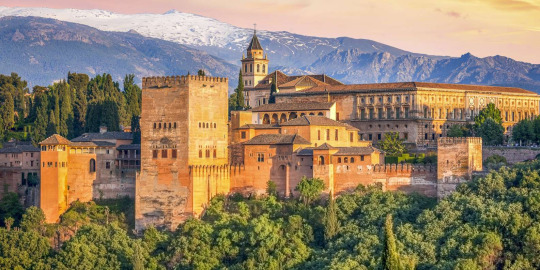


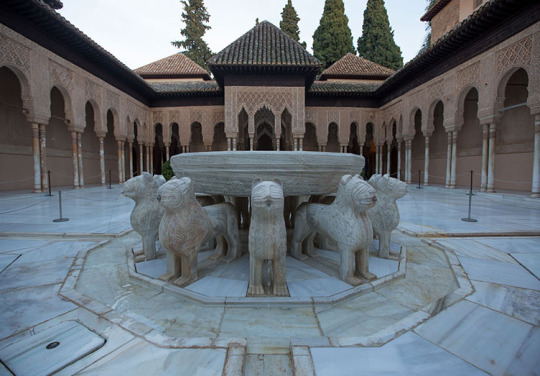
we're almost done, hold up (this is the first post where i had to cut some images cause i had reached the 30 pic limit oops). just north to alfornada, if you continue to climb up the mountain, you'll reach a ruins area. there are tons of these in paldea, and it makes sense, there's a ton of ruins everywhere in spain as well, but these are special due to its location, its context, and the arch and colums that can clearly be seen. i'm pretty sure this is a direct reference to medina azahara, the palace complex of the caliphate of córdoba, that now lies in ruins (another world heritage site). i visibly gasped when i got here, it shows how much thought the pokemon company put into this game :)
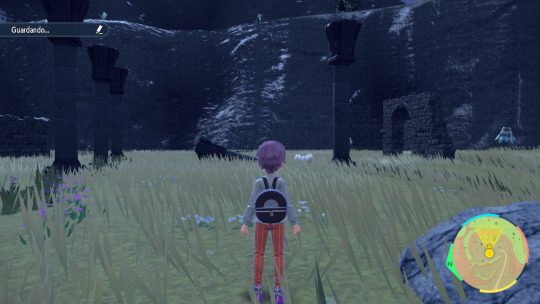

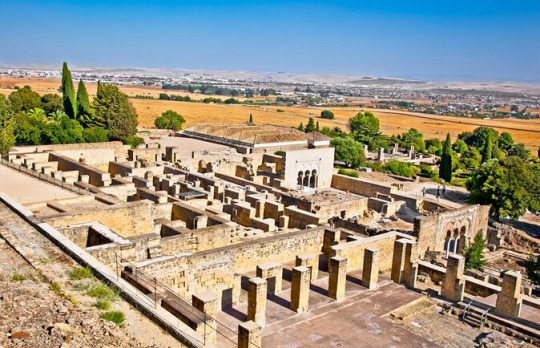

and that was all! i hope you liked it :)
here's next post !!!
#pokemon#pokemon scarlet and violet#pokemon sv#pokemon spoilers#pokemon sv spoilers#yeah i love alfornada :)#also like#the name#-ada as in granada#and in spanish the town is alforno town#al- is the arabic article that can be found in tons of spanish words#like alfar (pottery factory / workshop / atelier?)#and forno is just the old spanish way of writing horno (oven / furnace)#so yeah#probably the most detailed city in the region
39 notes
·
View notes